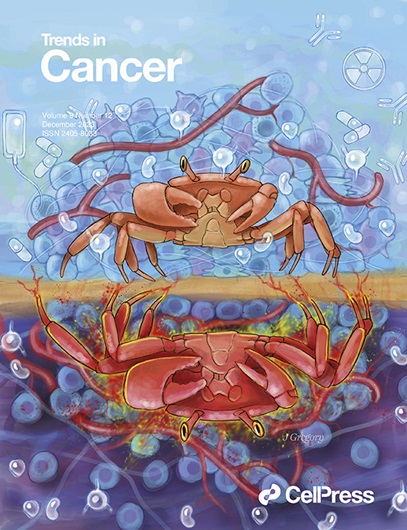mtDNA从衰老癌细胞转移到MDSCs促进免疫抑制。
IF 17.5
1区 医学
Q1 ONCOLOGY
引用次数: 0
摘要
亚致死性凋亡应激引起一些线粒体的通透性,加上细胞质线粒体DNA (mtDNA)的积累,已知可促进细胞衰老。Lai等人最近证明,这可能伴随着细胞外囊泡内的mtDNA释放,通过髓源性抑制细胞促进局部免疫抑制。本文章由计算机程序翻译,如有差异,请以英文原文为准。
mtDNA transfer from senescent cancer cells to MDSCs promotes immunosuppression.
Sublethal apoptotic stress causing the permeabilization of some mitochondria coupled with cytosolic mitochondrial DNA (mtDNA) accumulation is known to promote cellular senescence. Lai et al. have recently demonstrated that this may be accompanied by mtDNA release within extracellular vesicles that promote local immunosuppression via myeloid-derived suppressor cells.
求助全文
通过发布文献求助,成功后即可免费获取论文全文。
去求助
来源期刊

Trends in cancer
Medicine-Oncology
CiteScore
28.50
自引率
0.50%
发文量
138
期刊介绍:
Trends in Cancer, a part of the Trends review journals, delivers concise and engaging expert commentary on key research topics and cutting-edge advances in cancer discovery and medicine.
Trends in Cancer serves as a unique platform for multidisciplinary information, fostering discussion and education for scientists, clinicians, policy makers, and patients & advocates.Covering various aspects, it presents opportunities, challenges, and impacts of basic, translational, and clinical findings, industry R&D, technology, innovation, ethics, and cancer policy and funding in an authoritative yet reader-friendly format.
 求助内容:
求助内容: 应助结果提醒方式:
应助结果提醒方式:


